Jesús Vassallo’s Epics in the Everyday (2019): Review & Excerpt
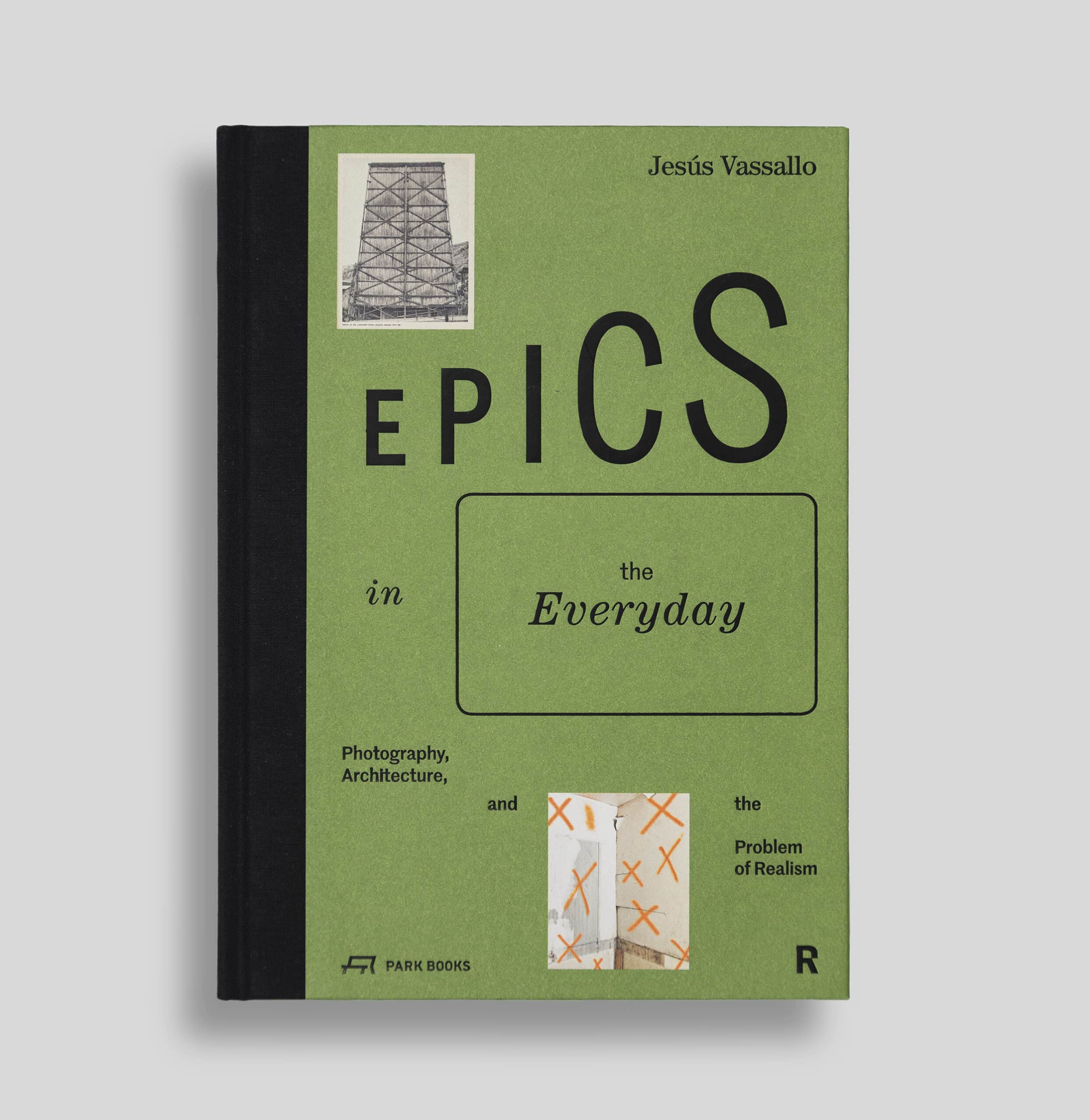
Review
The compelling question of reality, or rather its representation as realism presented as an aesthetic category, acts as the organising principle of this interesting book. This is an investigation of the relationship between photography, architecture and the problem of realism, as its subtitle explains. Its author, Jesús Vassallo, immediately grapples with the central problematic: his first sentence reminds us how ‘we came to identify architecture and the built environment as even mutually exclusive categories’. It is the contested boundary between these two states – the cultural and the more real, let’s say, although Vassallo himself identifies the other side as civilisation – that is traced through five more or less chronological episodes. These culminate in an almost contemporary concluding sixth chapter to the roughly 70-year period. Dualities abound and are essential in implying rather than defining this boundary, and often require a pause to work out their implications, especially with some of the more complex terms: transitive versus intransitive, or denotation versus connotation, for example, as different possibilities for this elusive condition – reality, civilisation, the vernacular, the realm of late-capitalism – occur within the different historical and geographical contexts that the individual chapters present.
Each episode or chapter engages with the human relationship, the to-and-fro, sometimes lop-sided, between a photographer and an architect. These biographical narratives are used to reveal a particular instance of photography as a strategic artistic mechanism that has been appropriated as a way of grasping salvation from the reality that architecture must engage with. A quote by Ed Ruscha on page 83 helps explain this: pictures did not ‘make statements about the world through art, [but rather] statements about art through the world’.
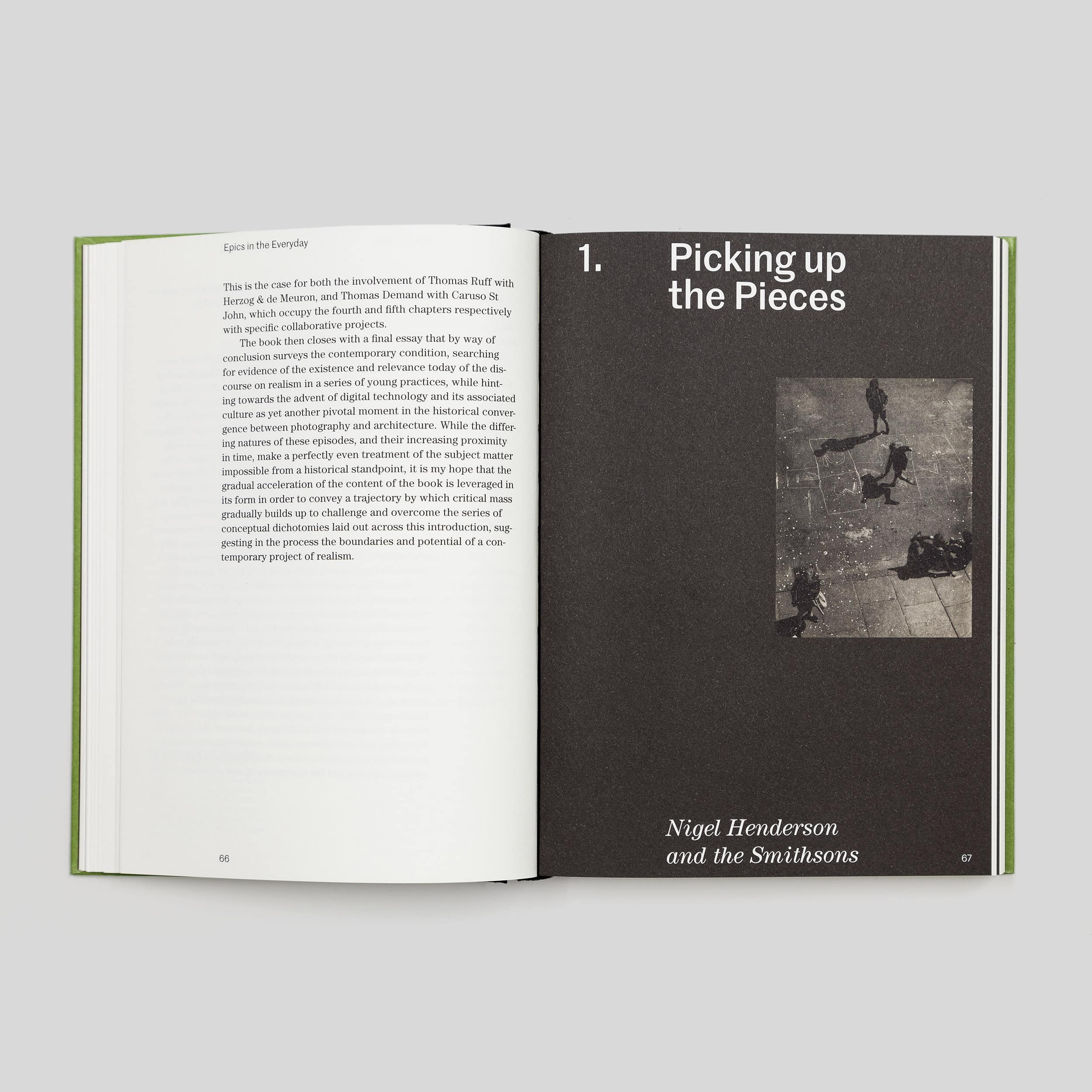
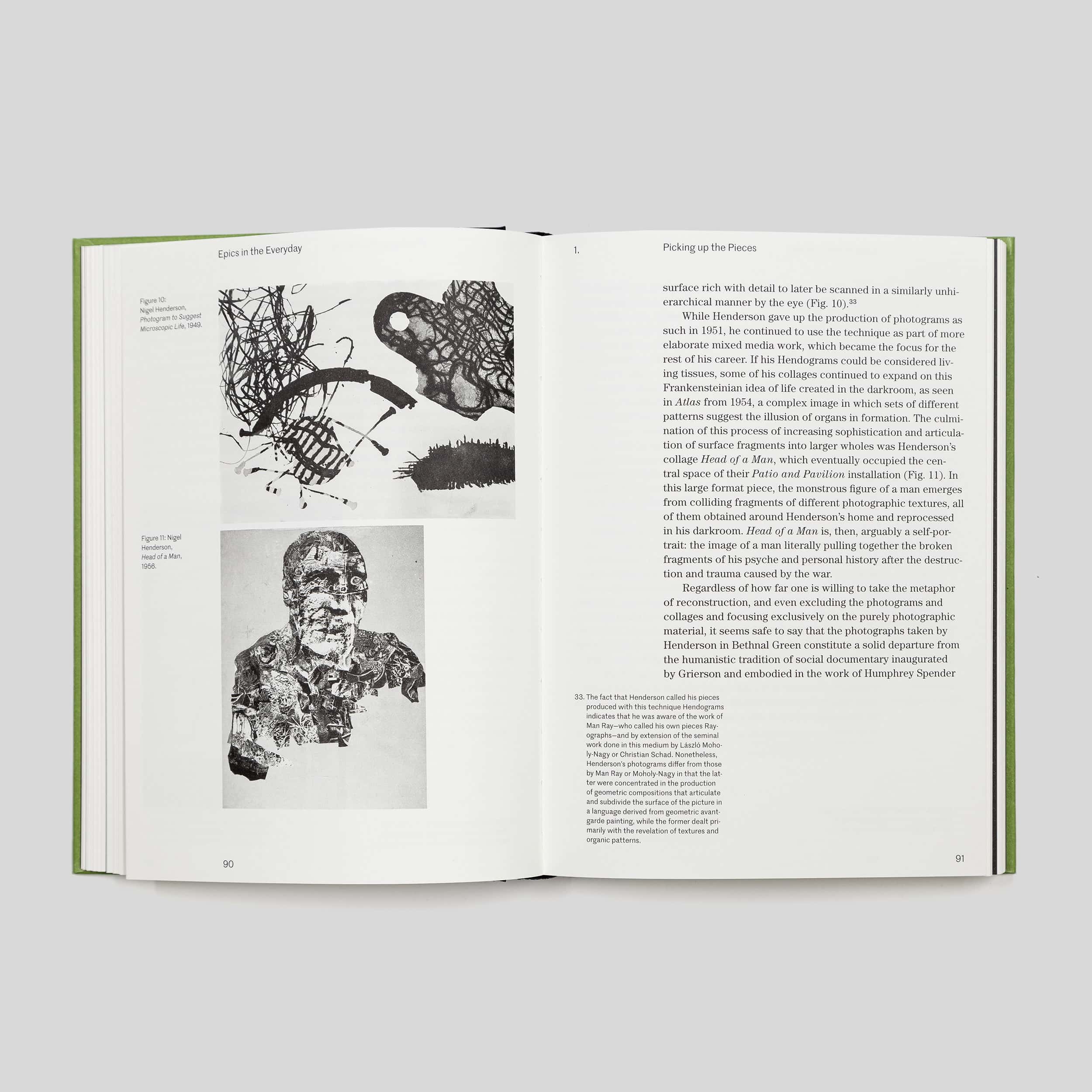
Following a long Introduction that lays out the terms of the argument, both conceptually and historically and in detail – especially fruitful is the discussion on documentary – the first chapter delves into 1950s London to broach how the work of Nigel Henderson was useful to the Smithsons. The mythology is not unfamiliar but nevertheless entertaining, and the perspective of a Spanish architect and teacher inhabiting American academia reveals fresh and intriguing insights, particularly into the mechanisms of class in post-war Britain, brought into relief through the relatively new sciences of sociology and anthropology. This critical engagement with class as a factor in defining reality is valuable and provocative, and to a certain extent is transferred to a US context in the discussion of Ed Ruscha through the eyes of Venturi and Scott Brown (a South African viewing, perhaps, with what Salman Rushdie calls the migrant’s double vision).
This thread is broken in chapter three, however, where the underlying currents change, and the ebbing of cultural production – of art, photography and architecture –into a smoother, more self-referential sphere, at least in the terms of this argument, begins. It would have been fascinating to follow this spiky class reading through into the following chapters, but it is not natural to stories told of those times. Reflecting on the reasons for this, it became apparent that it is types of relationships – friendships, alliances, collaborations, negotiations and translations – and the ways they have already been described by their protagonists that underlie these histories. To a certain extent, they take precedence over the images themselves, which are rarely the subjects, serving more as an index to (artistic) strategies, aims and intents. In this sense, it is not an art historical book. Taken most directly, it is a history-making project that is detailed, well-sourced, convincing and precise, as the excerpt proves, spinning a web of compelling myths with their own influential reality.


Chapter three: Seriality and Nostalgia, from which the excerpt below is taken, plays a pivotal role in the middle of the book, and unlike the others is not defined by an artist/architect pairing. It is poised between two sides: the post-war narratives of chapters 1 and 2 and the long-21st century accounts of chapter 4 (which investigates the collaboration between Thomas Ruff and Herzog & de Meuron, beginning in 1990) and chapter 5 (Thomas Demand and Caruso StJohn). Over on the other side, the world becomes familiar as one I have lived in, some of the stories I have heard and experienced first-hand. Writing a history of the recent past is a complex challenge, and it is admirably achieved here, charting a course between nuanced interpretations by using the framework set up in the Introduction to create a discrete realm. My own memories, for example, have different emphases and move in directions that diverge from the histories told here, but that is the nature of reality, so carefully contained and revealed.
Helen Thomas is Reviews Editor at Drawing Matter.
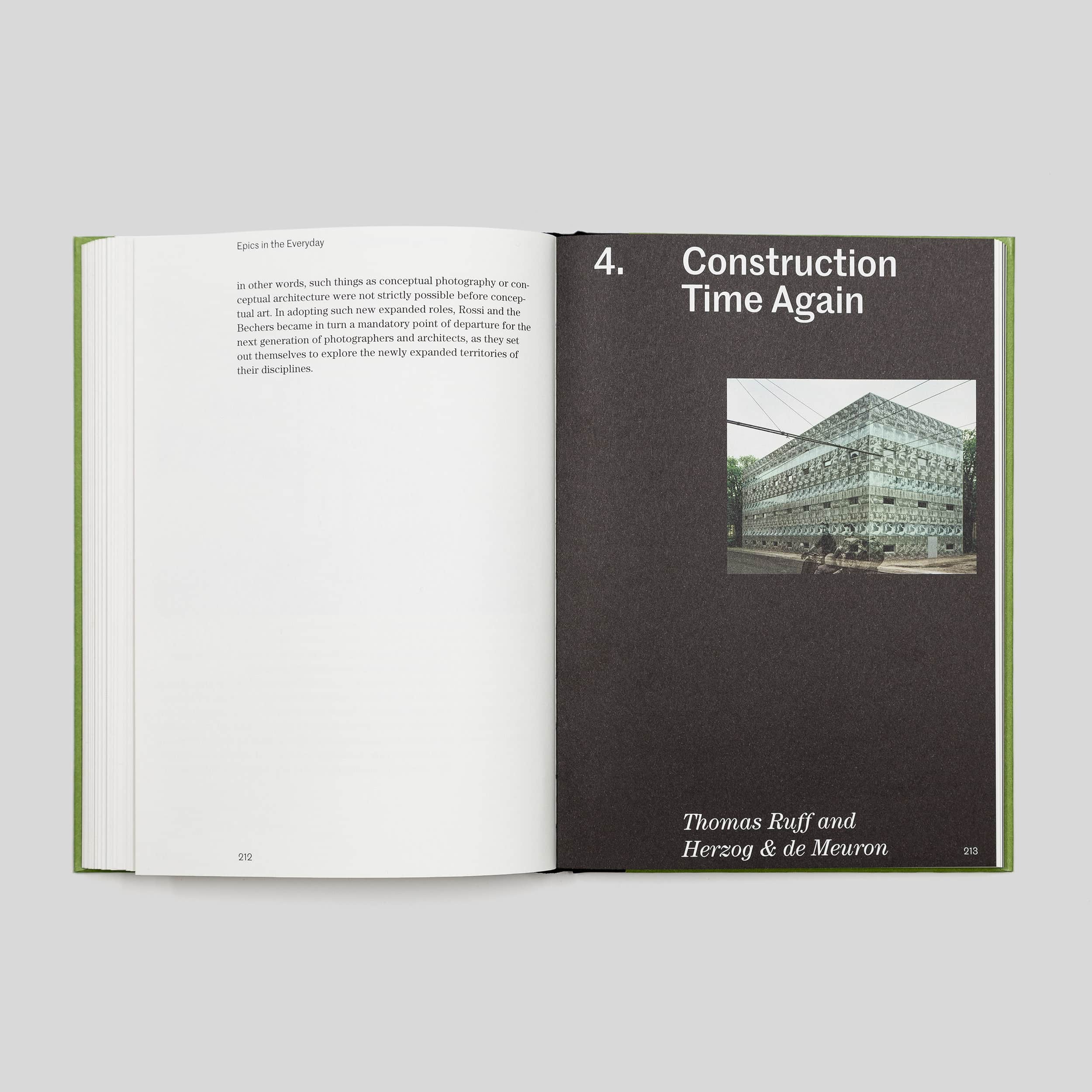
Excerpt: Chapter 3. Seriality and Nostalgia: Anonymous Architecture as Conceptual Art
A Changing Realism
Faced with a massive expansion of human urbanisation, which involved both the consumption of nature and the dissolution of the traditional city at a scale never seen before, the artists of the 1960s turned their attention to the physicality of their changing environment. Within this effort, Ed Ruscha was quick to gravitate towards the anonymous photographic document, as he mobilised the tools of photography in an attempt to foreground a new type of commercial anonymous construction that was as confusing as it was blatantly ignored in cultural discourse. His use of the mechanisms of documentary photography, however, was contradictory in that it rehearsed a systematic archival study and at the same time intentionally truncated it, through the emphatic incompleteness of his series and the lack of information or value held by each individual image.
The conceptual and minimal artists of the New York scene, such as Sol LeWitt or Dan Graham, were quick to pick up this thread in their works of the mid-1960s, and went beyond the acceptance of the aesthetic of anonymous architecture to propose that the schematic logic underlying these constructions could provide a model for an art practice that would skew personal expression in favour of systematic thinking. Eventually, their interest in architecture led to the development of serial work based on the deployment of limited variation. According to the indexical logic of conceptual art, the use of the series operated by generating a group of instances which, when displayed together, allowed the viewer to retroactively visualise the rules and degrees of freedom of the system that had generated them.
While their actual experiences with photography were quite limited, the efforts of the minimal and conceptual artists encouraged the generation of photographers in New Topographics to rehabilitate the project of documentary photography as an autonomous mode of practice and a legitimate way to gain insight, if for the most part aesthetically, into the processes and the objects of urbanisation. In this new incarnation, the reinvigorated consistency, quality, and precision of the work validates photography as a means to focus on specific phenomena in the world and gain insight into their configuration and qualities. Within this group, Lewis Baltz and the Bechers most poignantly focused on the artefacts of the built environment and turned onto them the powers of abstraction of the photographic medium, offering visual evidence that reaffirmed the initial intuition of the conceptual artists that an art project was implicit in the repetition and systematic quality of anonymous architecture.
The trajectory traced here, spanning [Walker] Evans, Ruscha, the photo-conceptualists, and the New Topographics, can be characterised, then, as a process of gradual self-awareness regarding photography’s relationship to reality. The initial social documentary project of the 1930s, in which Evans partially participated, relied on the perception of photography as trans-parent in order to channel a series of pre-scripted messages. Evans intuitively retreated from this practice of propaganda through a two-step process, first by reducing the possibility of secondary meaning in both the construction of the images themselves and their display formats, and second by the retro-active reconceptualisation of his work undertaken in tandem with Szarkowski, during which he came to acknowledge his ‘attitude of detachment and record’ as independent from both truthfulness and utility.
In the case of Evans, it was still unclear what the benefit of such style of authorial removal was, regarding the subject matter, other than extending modes of artistic contemplation to subjects previously understood to be outside of that realm. With Ruscha, however, the effect of such artifice became more explicit as it came to be acknowledged as enabling a delay in judgment and an openness of interpretation when approaching new and unexplained realities. On the other hand, Ruscha’s intentional contradictions, across the different levels of construction involved in the publication for-mat, ultimately produced a type of Brechtian estrangement not dissimilar to the effect produced by Dan Graham’s Homes for America. While both Ruscha and Graham initially bring our attention to the found element—whether the gas station or the spec house—eventually the increased levels of contrivance in the higher structure of the work—the composition of the book or the layout, text, the mode of distribution, etc.—disclose the artificiality of the operation, provoking the viewer to reconstruct the intellectual process of the artist and speculate on his intentions, which are never completely free from the suspicion of irony. [1]
This mode of operation changes, however, with the generation of the New Topographics. Through the reskilling of photography itself and the return of the images to more conventional display spaces like the gallery wall and the catalog page, the viewer is once again invited to take the involvement of the photographer with his subject seriously and with-out ambivalence. This is not to say that the photographic style of any of the New Topographics is less artificial than the pretended amateurism of Ruscha. On the contrary, and as noted for Baltz and the Bechers, the level of manipulation and pre-meditation of their visual language is extreme. However, in these cases the artificiality in the representation of the subject matter—the extreme degree of abstraction—and the type of estrangement that comes with it, seem to draw us deeper into the image instead of out of it, fostering a more involved consideration of both the photographic object and its subject matter.
In this new type of estrangement, a softer and finer dissonance between the everyday quality of the depicted object and the constructed realism of its representation replaces the previous Brechtian breaking of conventions. Where the latter produced an interruption of the act of contemplation and called into question the position of the artist, the former enables in turn an extended experience of the work, which slowly morphs into a critical reflection. Jeff Wall has discussed this effect of absorption, which he identifies in his own work, as explicitly ‘antithetical to the conditions of reflexive and artificial estrangement indispensable to the unhappy lucidity of critical modernism.’[2] Michael Fried has in turn elaborated on this passage by Wall, which he considers to be decisive, in order to declare the inauguration of a new regime of art photography precisely with the work of the Bechers in the early 1970s. [3] The writings of Wall and Fried on this topic, which are mutually contaminated, and which have more recently informed the work of Michael Young, all seem to point towards a fundamental transformation of photography as it re-emerged from the crisis brought about by photo-conceptualism to occupy a new and predominant position within the realm of art. [4]
More importantly for the thesis of this book, by the end of this process, photographic realism can no longer be considered a default or a given, if it ever could, but demands to be acknowledged instead as a very intentional construct, the numerous variants of which have as many particular ways to inform our relationship to reality. If Evans can be considered as initiating a veiled criticism of the myth of photographic transparency, by the time the Bechers come of age such myth is definitely shattered. Their generation and following generations of post-conceptual photographers, however, insist in giving preference to the denotative component of photography, its capacity to document, while explicitly establishing the tension between this direct link to reality and the artificiality of their constructed visual language as the engine of their practice.
Additionally, the fact that these consecutive generations systematically mobilise their photographic apparatuses in order to isolate and bring into focus the most explicit and flagrant conflicts manifested in the built environment must be understood, beyond a preoccupation with ontological questions, as a testament to the existence of a critical photographic realism, laboriously built and rebuilt through the decades in the fringes of documentary photography. Such real-ism proceeds by systematically confronting society’s self- image with a more accurate yet disturbing picture of reality, or to put it in terms more similar to those stated in the introduction of this book, by making apparent the discrepancy between our perceived production as a culture and our actual output as a civilisation. [5]
Increasingly, artists like Baltz and the Bechers and the generations that follow after them exceed the traditional limits of photography as they deploy abstraction and manipulation to wilfully construct new worlds, as if compressing the process by which the minimal and conceptual artists departed from the observation of an ‘artificial landscape without cultural precedent’ towards the production of a series of resonant objects. Eventually, in the radicalisation of this trend, as will be laid out in the following chapters, certain visual artists approach a mode of operation symmetric to what has been characterised here as the deployment of transitive abstraction within the realm of architecture, bringing the disciplines to a new proximity.
In inhabiting the role of the amateur photographer, the trade publisher, or the anonymous builder, conceptual artists created structures that enabled them to operate within new systems of rules and constraints for the production of art. After that, and only after that, it is possible for the photographer or the architect to in turn imagine themselves as artists inhabiting the body of their respective professions. In that regard, the appropriation by conceptual artists of a series of semi-autonomous practices such as photography and architecture has the unexpected result of allowing those disciplines to subsequently assert their own autonomy. Through the possibility of the selective mismatching of methodology and social contract posed by the minimal and conceptual artists, a middle or common ground appears in between disciplines that did not exist before, one that will transform the relationship between photography and architecture in the coming decades.
Notes
- This argument is advanced in the previous chapter in which certain projects by Venturi and Scott Brown are also characterised as operating in a similar fashion.
- Jeff Wall, in Theodora Vischer and Heidi Naef, Jeff Wall, Catalogue Raisonné 1978–2004 (Basel: Steidl/Schaulager, 2005), 281. Quoted in Michael Fried, Why Photography Matters as Art as Never Before (New Haven and London: Yale University Press, 2005), 12.
- A conscious decision has been made to privilege Wall over Fried throughout this book. Not only is Fried’s writing on photography deeply indebted to Wall’s texts, but addition-ally, in his work on photography, Fried constantly references back to his previous work on literalism, which is problematic in that it forces him to wilfully ignore the allusive function of minimalist sculpture.
- Wall takes the term ‘absorption’ from Fried, who in turn relies heavily on Wall’s work and writings in his own book on photography, where he credits the many conversations between the two. Fried does explicitly characterise the type of modern estrangement discussed by Wall through reference to Bertolt Brecht. In turn, Michael Young focuses precisely on the overlap in the writing of Wall and Fried in his own discussion of contemporary modes of realism, in which he touches on Wall’s distinction between modernist estrangement and the type of absorption present in his work, which Young characterises as a new type of estrangement that is more intricately dependent on the relationship between the object and its representation. Michael Young, The Estranged Object (Chicago: Graham Foundation, 2015), 33, 61.
- This characterisation is indebted to John Rohrbach’s description of an American lineage of photographic realism going back to Paul Strand, Robert Frank, and Walker Evans, which finds continuity in the New Topographics. John Rohrbach, ‘Introduction,’ in Reframing the New Topographics, xiii–xxv.
Extra note
New Topographics, mentioned in paragraph three of the extract, is discussed earlier by Vassallo, and described as ‘a loosely used term, … in fact the title of an exhibition curated in 1975 by William Jenkins for George Eastman House … The show featured 168 works by ten photographers: Robert Adams, Lewis Baltz, Bernd and Hiller Becher, Joe Deal, Frank Gohlke, Nicholas Nixon, John Schott, Stephen Shore, and Henry Wessell Jr. The photographs in the exhibition, with the full title of New Topographics: Photographs of a Man-altered Landscape, focused on the built environment with an emphasis on the cheap constructions of the sprawling American West, and were largely received at the time as a critique of uncontrolled construction and the gradual consumption of the natural landscape.
Jesús Vassallo, Epics in the Everyday. Photography, Architecture, and the Problem of Realism (Zurich: Park Books, 2019), 181
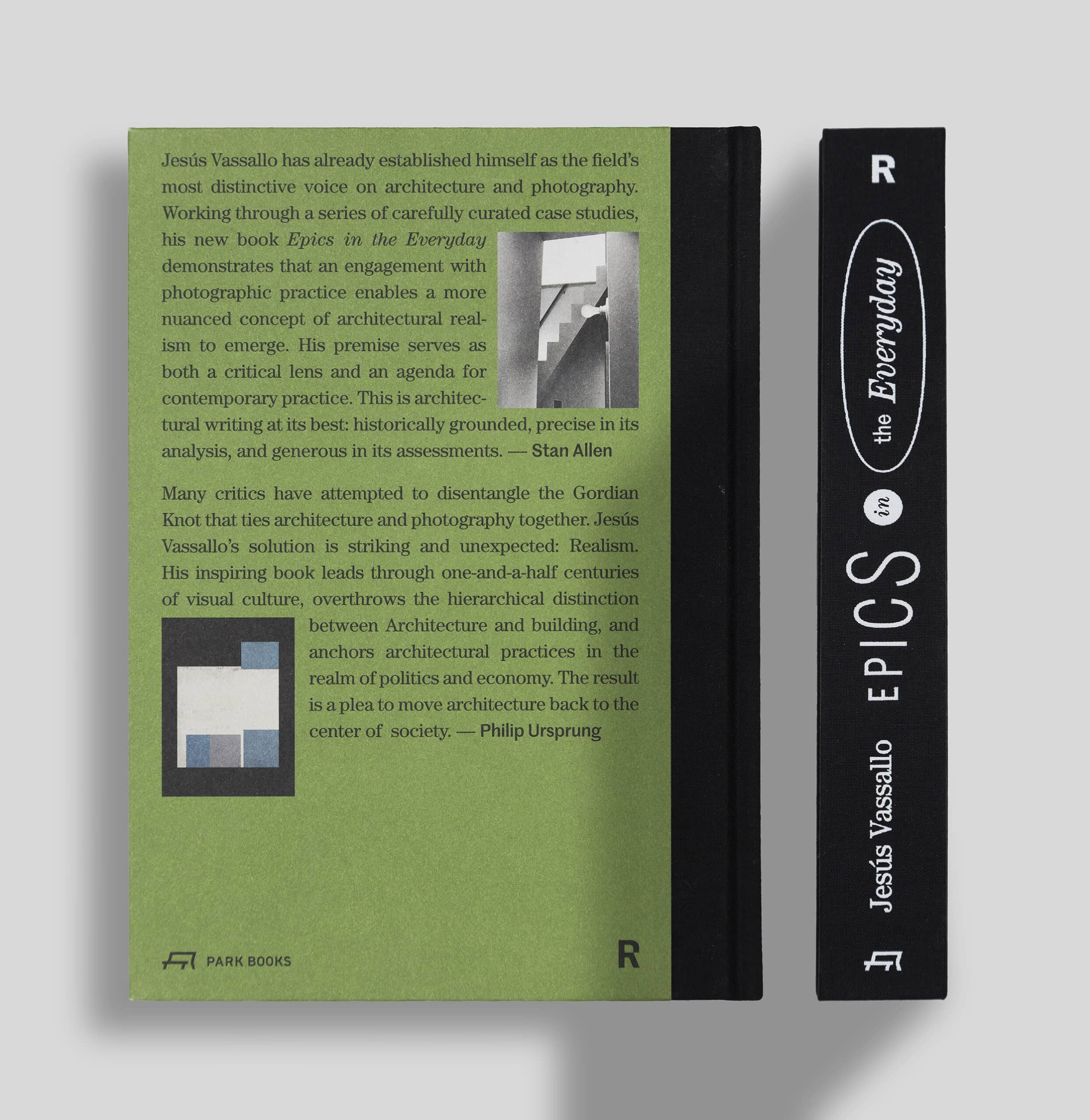
To find out more about Epics in the Everyday: Photography, Architecture, and the Problem of Realism by Jesús Vassallo, click here.
